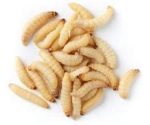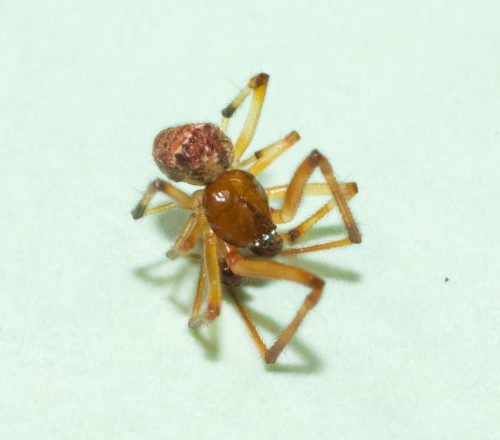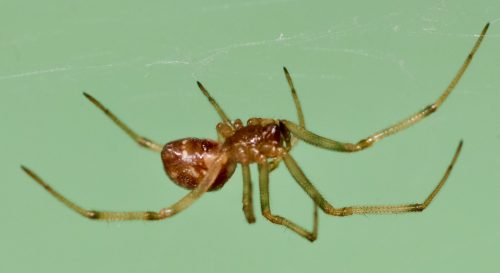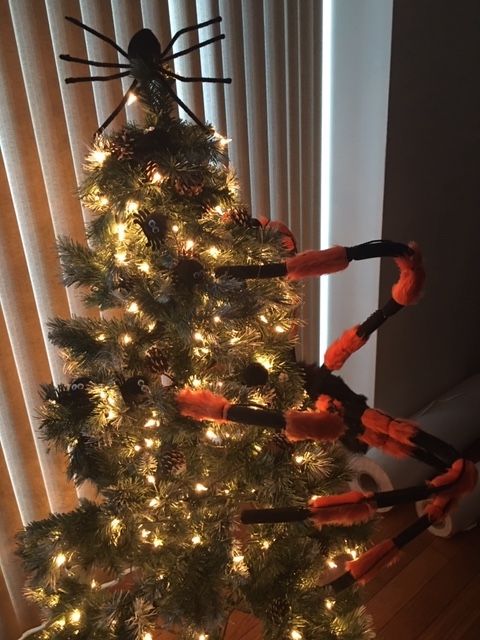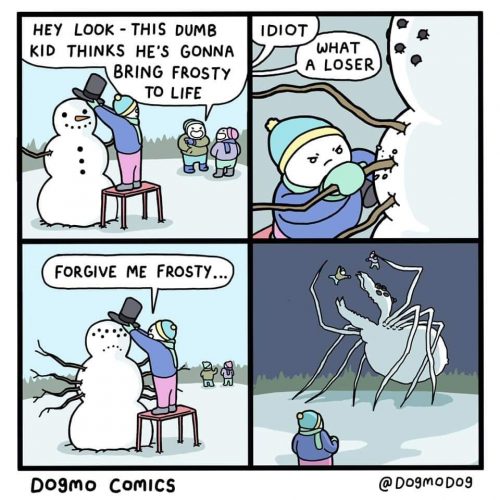This morning, I cruised down to the local bait shop and bought a bunch of waxworms. “Good luck fishing,” said the proprietor, as I was going out the door. I didn’t feel like explaining that there would be no fish involved today.
I got to the lab and delicately tweezered one pale white waxworm into the center of each cobweb, where it would squirm unhappily. It had been lifted out of its comfortable environment and was hanging suspended from a couple of cables, which it did not like at all. Picture a whale trussed up and dangling from the ceiling of a meatlocker, straining to escape the trap, while little fanged predators look on.
The spiders usually paused for a few minutes. I imagine they were briefly stunned at the immensity of the bounty that has fallen from the skies, but they didn’t wait long — they swiftly scuttled out, their hindlimbs flickering as they quickly reinforced the webbing, occasionally moving in close for a long kiss.
When I left, I looked in the incubator…rank after rank of transparent cages, like little glass abbatoirs, each with a madly writhing worm struggling desperately to escape, each with a small long-legged creature clinging to their back, biting.
Warmed my heart, it did. They looked so happy and eager (the spiders, not the worms). It reminded me of my kids on Christmas morning.

